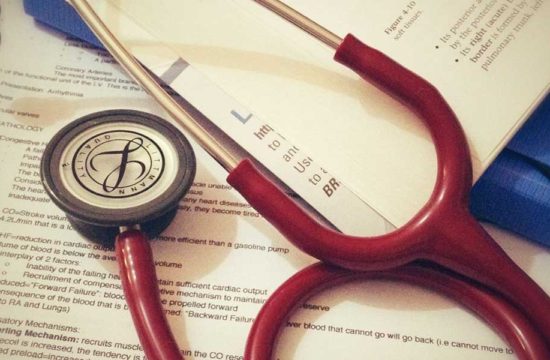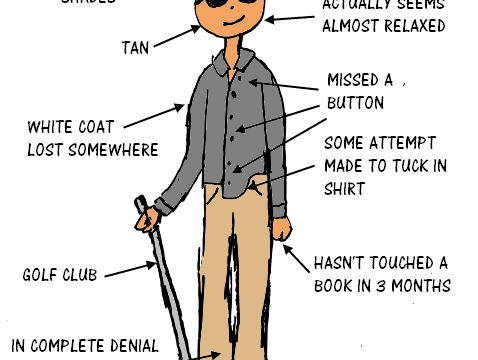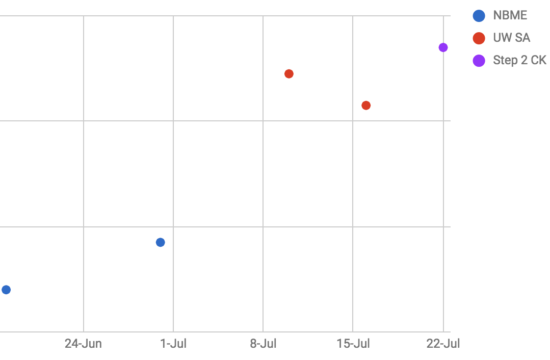Every hospital is different however here are the main components of a normal day for a third year medical student. Also, the order of these events may change depending on rotation however at least this will give you an idea of what to expect as a part of your clinical rotation schedule.
SIgnout
This is the process where the night team updates the day team on any overnight events and any day time follow ups. This is important in maintaining care for the patient as the teams change shifts. As a student, you should pay attention to the patient you are following but I found that knowing what’s going on with your entire list at least the sicker ones, helps the learning experience. Knowing what’s going on and telling the residents you know what’s going on are two different things. And what I mean by that is definitely be curious and follow multiple patients however only take responsibility for what you can truly handle. As a 3rd year stick to the lower end and work your way up. You want to be as thorough as you can and learn everything about your one patient rather than superficially know all.
Morning report
This is usually how most programs start their day. It usually consists of an academic discussion about a patient, case presentation, topic presentation or article review. Morning report is the academic portion of a resident’s day however students are always encouraged to participate. At some programs, there is a morning lecture/report that is specifically for students so as some TV commercials like to say, results may vary.
Pre Rounds
This can occur before or after morning report depending on the program. This is when students and residents run around frantically or not checking in on your patients and their nurses to catch up on overnight events. Theoretically after signout, you should have a good idea of what’s going on but when you preround you can talk to the patients yourself and chart round by looking up labs that were drawn early morning and only resulting now. Things you might ask a patient during pre rounds are questions about new pains, abdominal pains, headaches, bowel and urinary movements, ambulation, respiratory status, any shortness of breath, changes in mental status etc. Think of it as a focused review of systems. These are things you would report to the team during rounds as overnight even
After seeing the patient and checking morning and follow up labs, check progress notes from any of the other physicians following the patients to see if the plans or recommendations have change. If you are the primary care team usually this means checking consult notes when relevant.
Rounds
Depending on the specialty and service, this can mean physical rounds walking from patient room to patient room or it can mean table rounds where you discuss each patient in a conference room or office room of some variety. Sometimes there is a combination of both.
Rounding is done with students, residents and attendings and sometimes even nurses all present so in essence, the patient care team. You present the patient mainly in the SOAP format. Patient with PMH comes in for whatever reason. Any overnight events. Any pertinent physical exam findings from prerounds. Any pertinent labs, imaging, follow ups. Assessment and plan.
If the patient was newly admitted, you would be a little more thorough with the HPI and presenting events.
As a 3rd year you won’t be expected to fully know the plan however you can always consult with your residents before presenting on rounds. Also, it’s important to start practicing the assessment and plan portion. Over time and with experience, you will get better at it. Every service uses a different layout and every attending likes things presented a certain way but for the most part if you attempt to follow the SOAP format with an attempt at Assessment and Plan you will do well and learn a lot.
Rounds are usually the only time you will have face time with the attending physicians. This is the time to shine. Depending on the attending and hospital you may be called out on and be asked questions about topics. Some even ask for presentations or brief topic talks. Rounds are the core of your learning experience on most services and specialities.
Signout lists
Every service and hospital is different however the concept is the same. Signout lists are ways for residents to keep tabs on all the patients they are responsible for. It will usually include identifying information as well as PMH and HPI. Lab results, meds and imaging may also be present. Most importantly, a section for follow ups and a few lines on current status are present. As a student you may be expected to update this list.
Cases
Some rotations will have procedures whether it be deliveries or c sections or surgical procedures. Outside of rounds, you will have an opportunity to see these cases. It can be a majority of your day as it is on surgery or a small part of your day if you’re on an office or outpatient based rotation.
Follow ups
After morning rounds and other activities, the residents usually follow up on things that were brought up or noted for each patient. If there is anything that needs to be done for your patient, the resident may ask you to take responsibility for him or her. If you are familiar with all the patients you have the flexibility of helping out across the board and like I said earlier, focus on your own but be open to learning about all the others.
Signout
By the end of the day, after everything is done and followed up on, signout occurs to the night team. This is when, like in the morning, residents update the next team on the events of the day. You may or may not be required to wait until this time depending on the program or hospital but usually you’re in a passive role at this point, just listening and watching the residents sign out to the night team.
For more content from clinical years:
Check out my list of things you should have with you: Buying Guide








